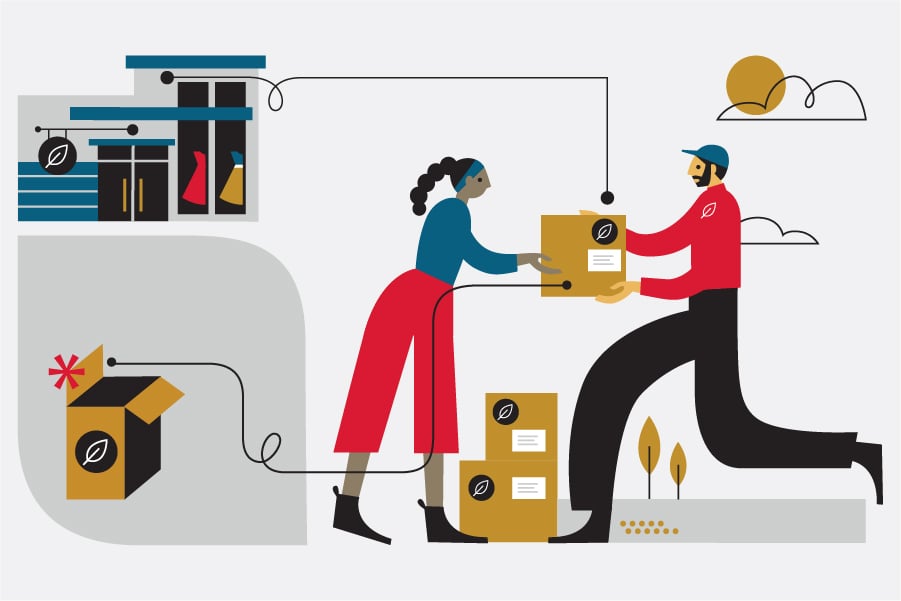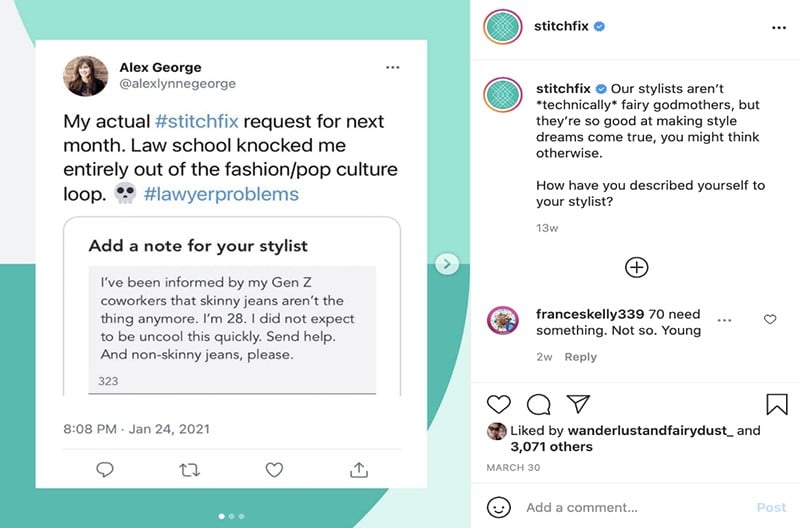Logística de Transporte
Industrias

In today’s crowded marketplace, it’s no longer enough to offer a product at a compelling price point – especially if that product can be found at a dozen other vendors on the web.
Standing out from the crowd as an e-commerce seller has never been more difficult – or expensive. Acquisition costs are climbing as brands fight for the attention of a more skeptical and difficult-to-impress base of customers. So, how can businesses win not just sales, but lasting loyalty?
Fortunately, direct to consumer (D2C) brands have a competitive advantage when it comes to building memorable experiences that bring consumers back for more.
In this blog, we’re going to explore why D2C brands are well-placed to create unique brand experiences in e-commerce, and what sorts of experiences they should be investing in to increase customer retention.
While wholesale channels do increase brand reach and access to new markets, this comes at the risk of diluting the brand experience. Ensuring consistency between retail channels when it comes to customer service, brand identity, and the post-purchase experience is incredibly difficult. Some partners will struggle to execute your exact requirements, whether that be custom packaging or visual merchandising. This can result in some customers feeling let down or less valued than those shopping in other channels.
As well as allowing brands to retain a larger share of revenue, a direct to consumer approach eliminates the traditional retail distribution model and makes it possible to take full control of the brand experience, ensuring that customers always receive consistent brand messaging and activations.
Being in control of distribution and marketing channels provides D2C brands with an unfiltered look into customer behavior and how different products are performing. Rather than having to pull sales data from different stockists or design complex feedback mechanisms for retail partners, D2C brands can engage in dynamic two-way conversations with their customers using social media, live chat, and email to better understand their needs and pain points.
This enhanced customer feedback gives D2C brands unmatched insights into what their customers want, as well as helping to brand trust and foster more meaningful interactions. By gathering data from every stage of the shopping journey, they can curate appealing brand experiences that bring their customers back time and time again.
E-commerce is a dynamic space that’s constantly evolving. As customer expectations grow for more unique, personalized experiences, it can be challenging for large retailers to keep pace. By directly engaging with their customers and analyzing real-time data, D2C brands are better positioned to adapt their strategies to meet what consumers are looking for.
This could mean introducing new products, improving existing ones, or launching fresh loyalty initiatives based on customer feedback. This flexibility makes it much easier for D2C brands to adjust their marketing approaches on the fly as new trends take hold.
If we look at the most successful D2C brands, they all have one thing in common; they’ve built memorable and distinctive brand identities that make them stand out from their competitors, even within saturated markets. These identities are woven through every touchpoint in the customer experience.
As brands that built their followings through digital channels, D2C brands learned early on about the importance of making the brand experience shareable.
In the pre-internet era, a parcel arriving on your customer’s doorstep would have been seen by one household at most. But in the age of social media, it can be shared and appreciated by millions. This has made the unboxing experience one of the most powerful branding and marketing strategies in ecommerce, allowing some D2Cs to gain iconic status.
Glossier has its bright pink bubble wrap and collectible stickers. Dollar Shave Club has its no-frills cardboard boxes with quirky messaging. Everlane prioritizes an eco-friendly approach with its paper envelopes. These unboxing experiences have helped cement these brands’ status as disruptors in their fields – and they continue to reap the rewards.
If you had a dollar for every loyalty program that exists in retail, you’d be rich. However, the majority of programs offer few benefits to brands or their customers.
The reason is simple. Most programs adopt what we at Ryder call a ‘punchcard mentality’. Customers get stuck in an endless cycle of earning and redeeming points, meaning there’s little incentive for them to support your brand over the long term.

D2C brands have created some of the most successful loyalty programs because they focus on relationship building. Lingerie brand ThirdLove has gained praise for its tiered loyalty program that rewards customers with a variety of non-transactional benefits, such as early access to sales and limited-edition products. This helps to drive customer satisfaction and encourages repeat purchasing behavior in a way that periodic discounts simply do not.
The key to building affinity with your customers is to understand that they don’t come to your brand with the same needs. It’s your job to figure out what these pain points are, and how to address them through your offerings.
‘Segmentation’ sounds like a very technical process, but most brands are doing it all the time. If customers have to spend $50 to access free shipping, you’re segmenting customers based on their shopping activity and rewarding those exhibiting desirable behaviors.

But there are some D2Cs who’ve made segmentation their entire value proposition. Stitch Fix hooks in customers through its bespoke styling service that requires customers to complete a style quiz, allowing stylists can hand-pick the perfect garments. This deep level of segmentation enables Stitch Fix to put the philosophy of ‘no two customers are alike’ into practice.
So, how can you achieve this level of control over your own brand experience?
Before pulling too many cooks into the kitchen, it’s important to look outside of your organization and listen to the people who know best - your customers.
When given the right outlet to share their feedback, your loyal customers will tell you exactly what they like and don’t like about the brand experience. Understanding what will entice customers to engage more with your brand ecosystem or create a more seamless shopping experience is the key to building a brand that truly reflects your audience.
In such an overcrowded marketplace, it’s easy for e-commerce brands to feel like they are just one of many. And in the era of boutiques selling wholesale products, this can easily be the case. This is why it’s so important to give customers a tangible set of reasons why you are the brand they should buy from.
This should never focus solely on price (let’s face it; there’s always somebody, somewhere ready to undercut you) but instead on what a customer cannot find with a competitor.
It could be inspiring, engaging social channels, a vibrant brand community, a kick-ass loyalty program - you decide! Whatever it is, your brand needs to be ready to put this front and center in its marketing campaigns. By giving consumers a reason to care, you can give yourself a competitive differentiator over other vendors.
The post-purchase experience is frequently neglected in e-commerce as brands move on to securing the next conversion. Yet providing a memorable experience upon delivery is the key to boosting retention and freeing up those valuable dollars for new initiatives. Happy customers who return to your brand again and again to repeat that memorable experience are customers who provide ongoing value at little extra cost. However, this is only made possible by finding a 3PL that can enable bespoke experiences like custom packaging, kitting, inserts, and all of those personal touches that make customers feel valued and excited about their purchases.
To achieve control over your brand experience, listening to your customers is paramount. Loyal customers, when given the right outlet, provide invaluable insights that shape a brand's ecosystem and enhance the shopping experience. Understanding your unique selling propositions and effectively communicating them to consumers—whether through engaging social channels, vibrant brand communities, or compelling loyalty programs—establishes a competitive differentiator.
By charting a course outside of traditional retail distribution models, D2C businesses can maintain full control over their brand storytelling, ensuring consistent, personalized, and memorable interactions with customers.
Loyal customers, when given the right platform and channels, provide invaluable feedback that help brands to refine a more seamless and enticing experience. Likewise, loyalty programs focused on relationship-building rather than a transactions help to elevate a brand's unique selling proposition.
In this strategy, It’s vital that the power of the post-purchase experience is not overlooked. Partnering with a third-party logistics provider (3PL) like Ryder that’s capable of delivering bespoke fulfillment experiences ensures that customer relationships extend beyond the point of sale.